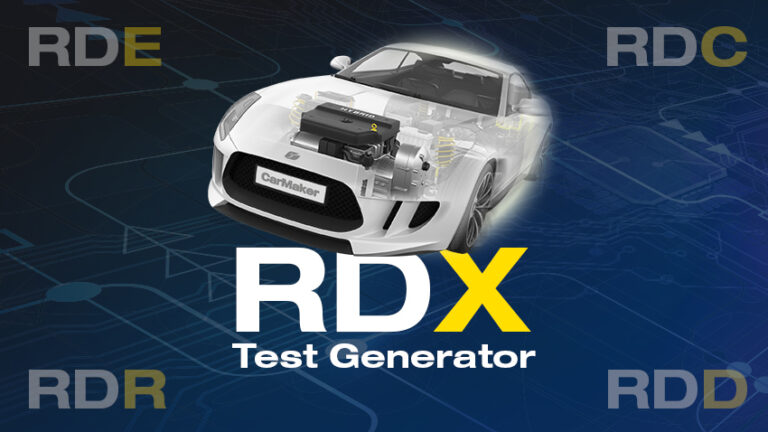IPG’s RDX Test Generator enables reproducible real test scenarios to be generated within the software, taking into account driver behavior and traffic density. This enables the evaluation of vehicle emissions and fuel consumption as well as propulsion system optimization, early on in the development process.
RDX Test Generator enables Real Driving Emissions testing based on an intelligent driver and a phenomenological traffic model for a known route. To achieve this, an extensive database of real drives on a variety of roads including urban, rural and highway routes was compiled, and the traffic scenarios classified by different criteria such as average speed.
Subsequent to importing the route including traffic signs and lights into the simulation software, the traffic situations are defined along the route according to road type and the selected traffic density.
The traffic flow within the traffic scenarios is realized using the driver model and by placing invisible traffic signs. For stop-and-go traffic, for instance, several stop signs are positioned in succession.
Within these boundary conditions, the simulated driver, depending on its defined characteristic, is able to move freely. As the driver has a significant influence on the test results, CarMaker offers the ability to freely configure the lateral and longitudinal control of the vehicle as well as the speed and steering profiles.
It also enables parameterization of the driver’s character in terms of dynamics, energy efficiency and nervousness. Users can draw on pre-defined driver characteristics for this.
By generating representative traffic scenarios, a variety of RDE-compliant situations and corner cases can be created and tested on selected routes without having to take measurements on real roads.
In addition, the RDX Test Generator enables analyses of roughly 20 conventional characteristic variables such as route per category, maximum speed, number of standstills, or standstill time in accordance with Euro 6d RDE standards. Users obtain a classification and overview of their test scenarios as a result and can decide which of these to continue using.
“High-performance computing can be used to generate, simulate and analyze a large number of scenarios during the model-in-the-loop stage according to RDE regulations,” said Alexander Frings, product manager, engineering services, IPG Automotive.
The result is more efficient and precise calibration of the engine and transmission control units under real driving conditions. It thus becomes possible to selectively analyze any effects of changes to the calibration, factoring in traffic or driver influences.
“Doing RDE testing virtually enables a reduction in cost-intensive time spent on the testbed as well as undertaking real test drives as it enables early testing and optimization without being dependent on the availability of prototypes,” Frings explained.


